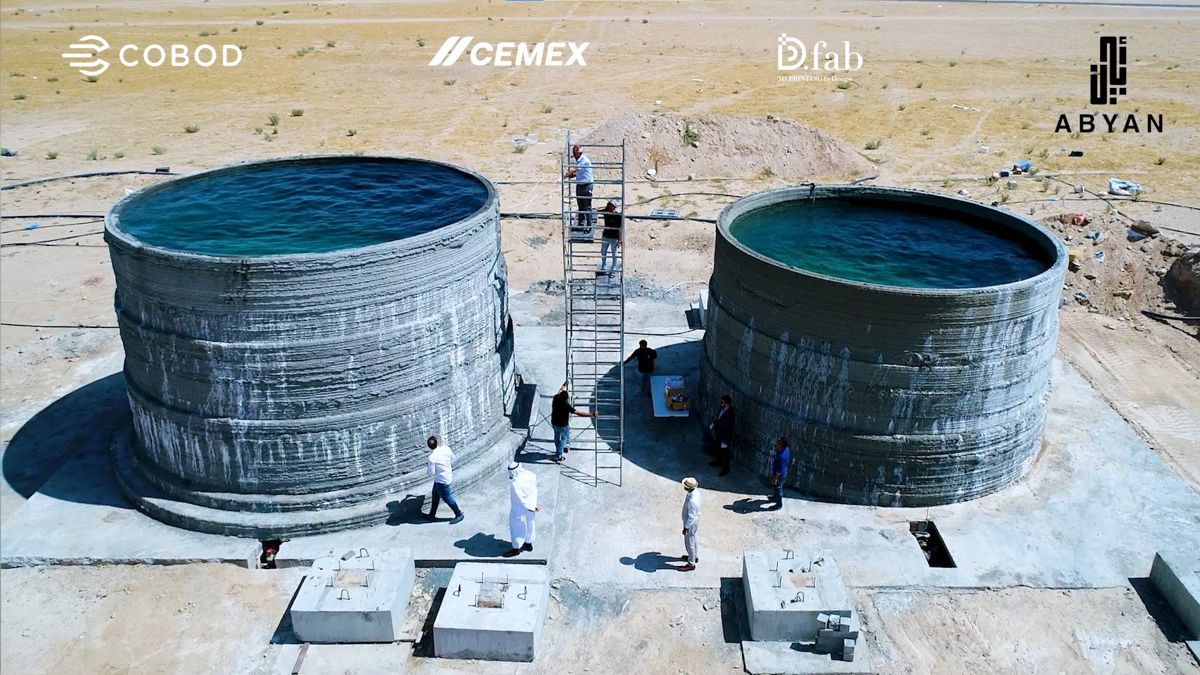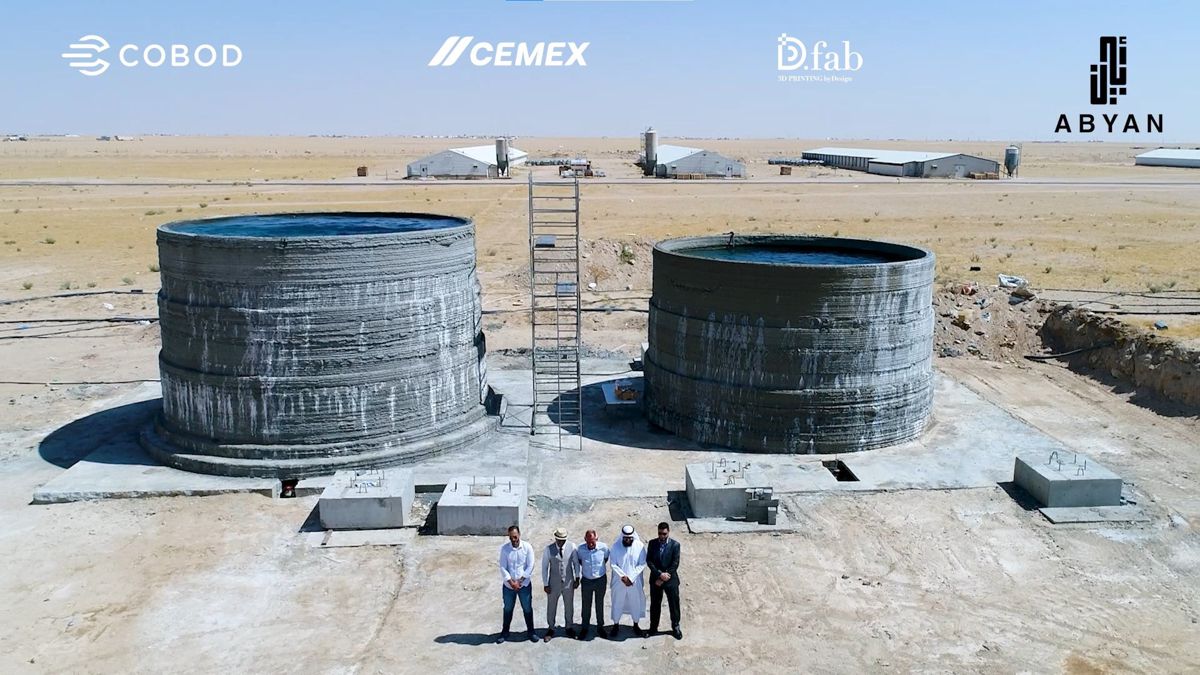In-situ 3D Printed Water Tanks use 25 percent less material
The design freedom of 3D construction printing has been known for years and has mostly been used for the creation of aesthetically more interesting and appealing buildings. However, design freedom also provides huge benefits for structural engineering and sustainability.
When constructing large tanks with the traditional method of formwork and concrete, the tank walls must be the same thickness from top to bottom because formwork can not vary the thickness in height. 3D construction printing does not have this limitation, allowing structural engineers to adjust the wall thickness where needed. Since gravity and water pressure make the bottom of the tank experience more stress, those areas need thicker walls.
With 3D printing, the bottom walls can be made thicker and the upper walls thinner, saving materials and making the construction of the tanks both more economical and sustainable.

This structural engineering principle is reflected in the below diagram, showing that the tank in Kuwait had 40cm wall thickness at the bottom part, 30cm in the middle part, and 20cm at the top part, leading to 25% less concrete and reinforcement have been used for the walls, compared to if the tank had been cast with 40cm walls all the way up.
The tanks were printed with a low-cost real C40/50 concrete mixed on-site using the D.fab solution and related printing equipment invented by CEMEX and COBOD, where 99% of all raw materials used are locally sourced. To further increase the speed of execution, Abyan insisted on using macro fibres for the reinforcement of the concrete. Macro fibres have not been used for reinforcement of 3D printed real-life structural constructions before, so the requirements from Abyan presented a real challenge. Henrik Lund-Nielsen, Founder & General Manager of COBOD said: “Abyan pursues real innovations, which we really want to support and they wanted to try to avoid using any hard reinforcement in the walls, and just add fibres to the concrete. Of course, this challenged us a lot, but together with Cemex, the three of us were able to find a very good solution, which now can be replicated elsewhere in the future”.

Abyan’s willingness to be innovative and try out new solutions is a consequence of the scientific background of the CEO and co-founder of Abyan, Dr. Ahmad Al-Nassem, who is a professor of structural engineering at Kuwait University. Dr. Ahmad Al-Nassem said: “It is in the DNA of Abyan to be innovative. Abyan is wholeheartedly committed to revolutionizing the construction industry at large by integrating cutting-edge 3D printing technology within concrete construction along with innovative solutions in design and construction materials, bringing forth a new era of efficiency and sustainability.
“So, when all of our calculations showed that with 0,95% macro fibres in the concrete, we could remove all hard reinforcement of the tank walls, we were keen to prove this new design concept with a real-life project”.
The two tanks were printed for Kuwait United Poultry Company and will be used for chicken drinking water at one of their many chicken farms in Kuwait. Due to the cost and time savings realized in the project, Kuwait United Poultry Company is keen to continue 3D constructing printing for tanks in the future.
Mr. Muhammad Al-Hussain said: “We are very happy about the results of this project and for the huge savings in time. We will surely repeat this method in the future and get more 3D printed tanks for our many chicken farms”.




















